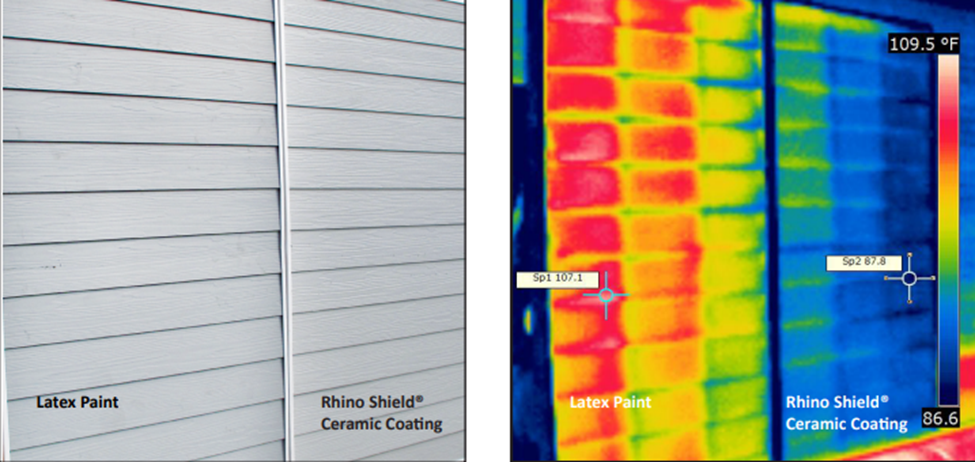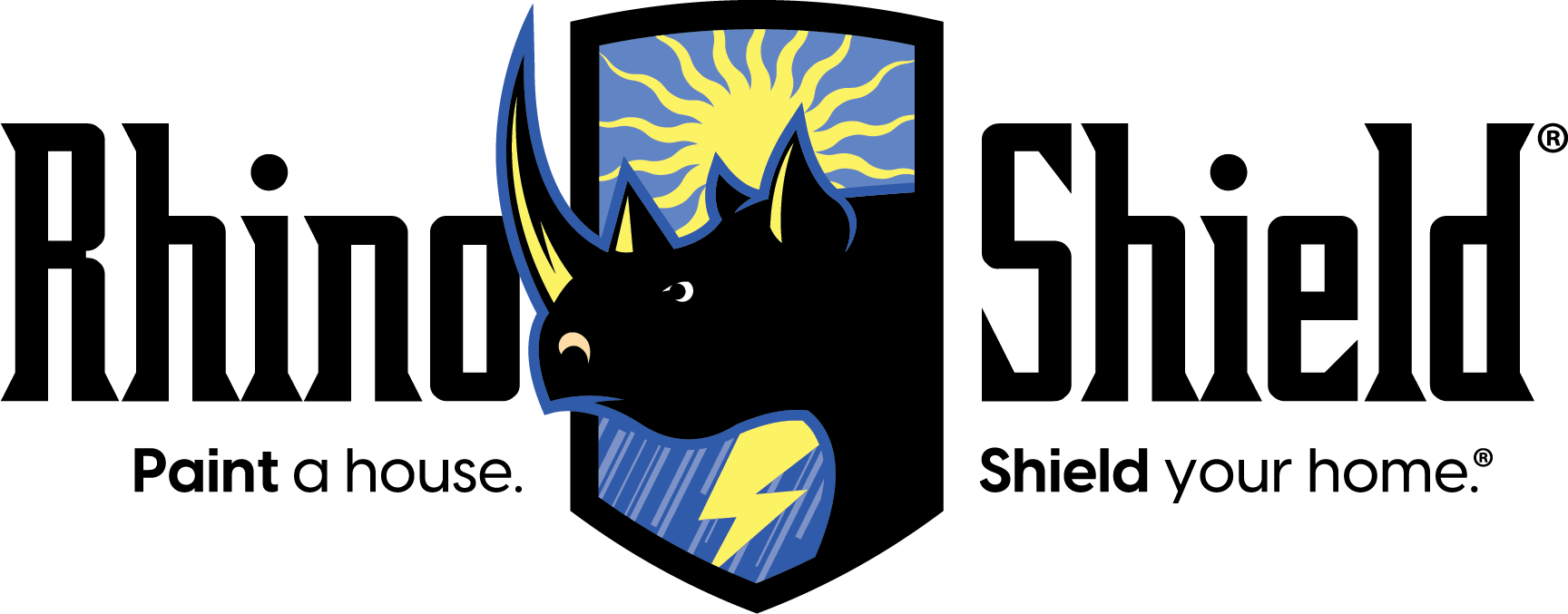
In the realm of siding options, cement board siding reigns supreme as one of the most popular choices for homeowners. At Rhino Shield, we coat thousands of homes with cement board siding every year.
During these jobs, we always answer many questions from customers, and some of the most common ones are related to their home's energy efficiency. We’re often asked things like, “Is my cement board siding absorbing a lot of heat and warming up my home?” and “Does Rhino Shield really help alleviate this problem in a substantial way?”
Spoiler alert, the answer is yes to both questions. However, we’ll take a deep dive into all the information, data, and pictures that serve to back up our claims.
The Downsides of Cement Board Siding
While cement siding boasts durability and resistance to water-related damage, it brings along its own set of challenges. Cement boards are susceptible to:
- Ph burn
- Mold, and mildew
- Heating up significantly under the relentless assault of UV radiation.
Unlike wood, cement siding doesn't rot, but its propensity to absorb heat can lead to increased energy costs.
Here is an explanation of the trifecta of challenges with cement board siding that impact energy costs:
First, they are prone to Ph burn, a chemical reaction that occurs when elevated alkalinity in fresh masonry substrates causes the breakdown of the paint binder (resin), leading to the eventual deterioration of the paint film. Second, their porous nature makes them susceptible to absorbing water, creating mold and mildew. This is particularly the case in moist conditions.
Lastly, cement board absorbs more heat than wood. Wood siding offers low thermal conductivity and good insulation, which will reduce heating and cooling costs. Cement board siding is a poor insulator and absorbs a considerable amount of heat in warm months. This excess heat permeates the interior of your home, compelling air conditioning systems to work overtime and leading to increased energy expenditures.
Addressing the Energy Efficiency Equation
The energy efficiency of a home is a complex interplay of various factors, including:
- The energy efficiency of your windows,
- The SEER rating of your HVAC system
- The level of insulation in both the roof and walls
- Your type of siding, which is most important because it constitutes the largest surface area of your home.
Rhino Shield's UV reflective coating takes a comprehensive approach, addressing multiple factors to offer homeowners a holistic solution to enhance their residences' energy efficiency.
Rhino Shield's Standout Feature: UV Reflectivity
At the heart of Rhino Shield's prowess is its UV reflectivity, a standout feature that distinguishes it from traditional paints. Unlike paints that absorb light and accumulate heat, Rhino Shield is engineered to reflect both visual and infrared light.
The secret lies in the 3m ceramic microspheres embedded within the Rhino Shield resin. These microspheres, varying in size and evenly configured, tightly interlock upon application, creating a dense packing that enhances the coating's thickness. This results in heightened durability and improved insulation properties for homes.
Above is the result of a thermal imaging analysis on a wall built in accordance with Florida building codes. The wall (in the above picture) featured cement board siding as the exterior cladding. One side of the wall was treated with gray latex paint, while the other side was coated with Rhino Shield in a corresponding gray shade.
From this comparison, we concluded that Rhino Shield consistently keeps cement board wall temperatures lower on both the front and back sides.
Reduced Surface Temperature and Energy Savings

Independent testing, such as this solar reflectance test conducted by Atlas Labs, has validated Rhino Shield's exceptional reflectivity. In this test, the higher the number, the more heat-reflective the object is.
With a solar reflective index of 106 and an impressive R-value of 6.89, Rhino Shield significantly diminishes thermal conductivity. This reduction translates into decreased energy consumption, potentially providing you with substantial savings.
To enhance solar reflectivity, Rhino Shield incorporates top-grade titanium, zinc oxide, and other pigments. Color choice plays a crucial role in the efficacy of UV reflective technology, with lighter colors providing superior heat resistance, ideal for regions with intense sunlight. Conversely, darker colors offer less heat resistance, prompting our recommendation to avoid very dark shades, especially black.
Can Rhino Shield Help Insulate Your Home?
Beyond its UV reflective properties, Rhino Shield's thickness, which is 8 – 10 times greater than average paint, adds an extra layer of insulation to homes. Below, the independent insulation testing demonstrates Rhino Shield's ability to resist heat transfer, contributing to both keeping harsh temperatures out and trapping in desired temperatures.

Surface temperature measurements were captured on materials facing away from the heat source, commencing at the start of the test and continuing at 5-minute intervals up to 15 minutes. The transfer of heat through each material occurred via conduction, with varying rates influenced by the distinct R values of the materials.
An infrared thermometer was employed to obtain temperature readings, and the sample's temperature was juxtaposed with that of the materials' R values. The initial temperatures at 0 minutes and the temperatures at the 15-minute mark were recorded in the data above.
Conclusion
Cement board siding is a popular building material. It is more durable than wood but looks like wood. Its major downside is the higher energy bills because of its propensity to absorb heat. Rhino Shield is a solution for this. By reducing surface temperatures, providing insulation, and incorporating cutting-edge ceramic technology, Rhino Shield addresses the pitfalls associated with cement board siding, offering you a comprehensive and sustainable approach to enhance the energy efficiency of your home.
For a more comprehensive look at how Rhino Shield can save you on energy costs, check out our piece on that here. Why just paint when you can paint and insulate?
If you’d like a free, no-obligation quote from us at Rhino Shield, scroll down.

